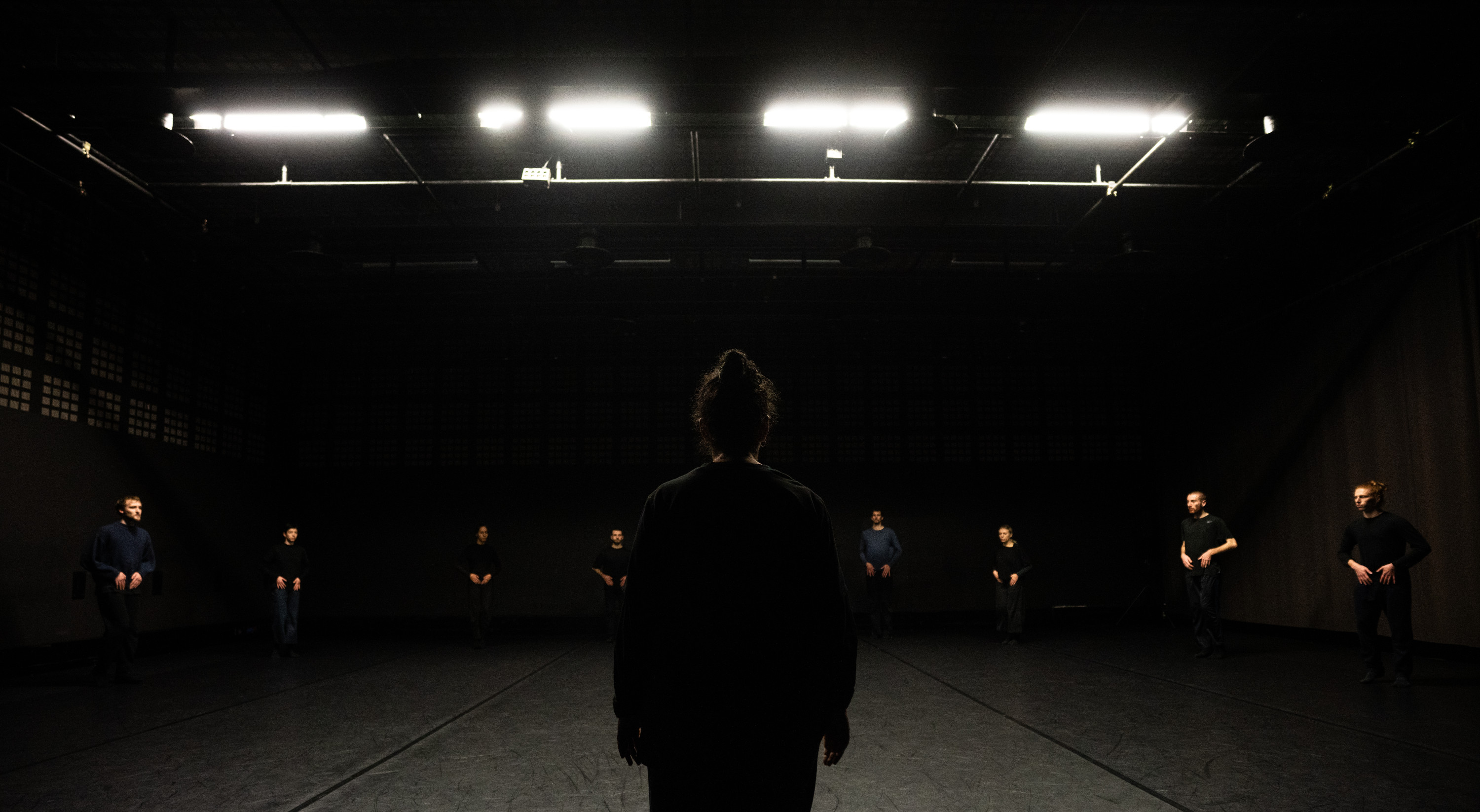Dalila Belaza
Rive
octoberoct 2 – 4
Wednesday october 2
20h30
Thursday october 3
20h30
Friday october 4
20h30
Conception, choreography, sound and lighting design Dalila Belaza. Performers Jamil Attar, Paulin Banc, Dalila Belaza, Erica Bravini, Adam Chado, Mohammed Ech Charquaouy, Andrés Garcia Martinez. Lighting management Alexandre Barthélémy. Sound management Solal Mazeran.
Production hiya compagnie – association jour
Coproduction Montpellier Danse ; Théâtre de la Ville-Paris ; Charleroi danse – Centre chorégraphique de la Fédération Wallonie-Bruxelles ; Centre chorégraphique national de Grenoble ; CNDC Angers ; CCN Ballet national de Marseille
With the support of the Caisse des Dépôts; Drac Île-de-France - creation aid; Région Île-de-France, creation aid; Adami
Locations courtesy of CND Centre national de la danse; La briqueterie CDCN du Val-de-Marne
Dalila Belaza is an associate artist of La briqueterie CDCN du Val-de-Marne
La briqueterie CDCN du Val-de-Marne and the Festival d'Automne à Paris present this show in co-realisation.
Using the 'pas de bourrée' dance step as her starting point, Dalila Belaza explores the universal part of the relationship between humans, their territory and our immemorial reminiscences. With a telluric intensity that extends beyond time, she builds a community linked by rhythms, and in doing so questions otherness and states of transcendence.
Drawing upon her previous creation Au cœur, the result of an encounter with the traditional Aveyron ensemble Lous Castelous, Dalila Belaza now puts together an eclectic microcosm, composed of heterogeneous choreographic individualities. Whilst the 'bourrée' dance step remains its anchor point, the aim is not to deconstruct a sequence of steps, but to come close to creating a common source that might irrigate the original dances of humanity. By mapping out a topography of our various contemporary presences, the choreographer makes the observation that in each community, the origin of danced identities is one of transcendence. She approaches the bringing together of cultural horizons through the principle of rhythm, a driving force located in the feet, pelvis, shoulders, or elsewhere depending on the particular culture, which is put to active, obsessive effect. In Rive, she summons a form of pre-trance communion, in which we dream of fusional ceremonies transporting us across intimate and utopian territories. In doing so, she reinvents, via the engagement of whole body, a universal story.
See also
